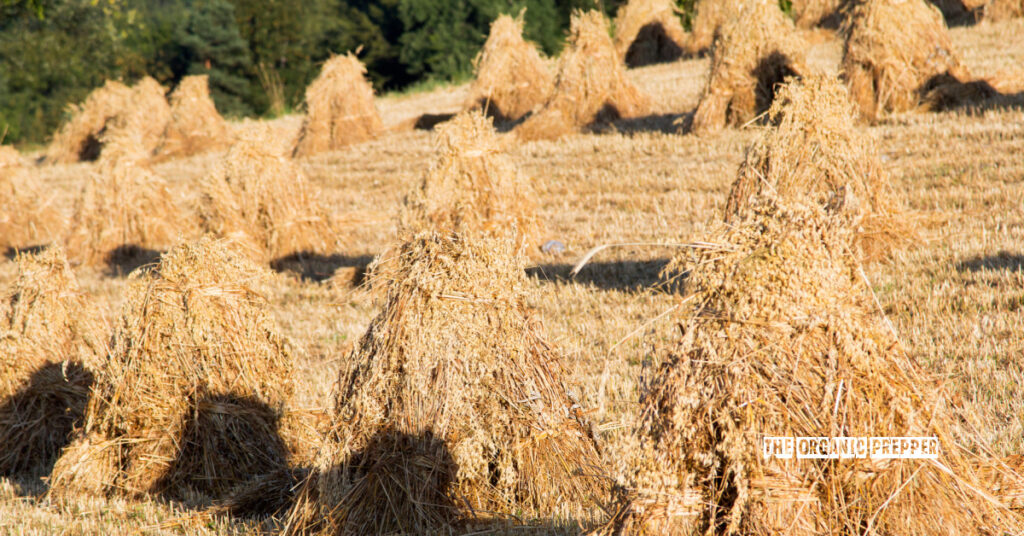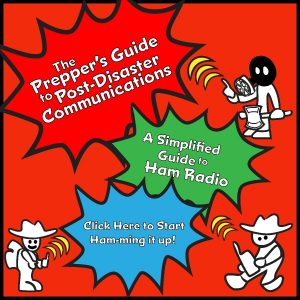If you're new here, you may want to subscribe to my RSS feed. Thanks for visiting!
In honor of the Fourth of July, I shared some lessons from America’s past that came about in this way: As I chatted with one of my friends, born in 1941, I was struck by how valuable his stories were and how they harkened back to some days in which Americans faced challenges with remarkable resiliency. I got his permission to share some of these stories with you, in the hopes that they will inspire you to look back to your own ancestors and the elders in your own communities for lessons on how to be prepared.
This is the second part in this series. In the first part of the series, which you can find here, I shared how George learned about these values from a young age: Waste Nothing, A Hard Day’s Work, and Improvise. These are values highly relevant to preparedness.
A bit about George these days: In his early eighties, George lives alone independently and tends a small garden. A year or two ago, he built the entire front deck on his house by himself. A year before that, he built a good-sized pump house for his well, also on his own. He is out at least twice a week enjoying social card games with his friends, and has many visitors from his children, grandchildren, and great-grandchildren.
Neighborly Bartering
As described in the previous installment, George worked many jobs of responsibility on the farm from the time he was a young child, just as my mother did on the dairy farm she was raised on. As he traveled to all the farms to do relief milking and other work, such as sheep shearing, George rarely received cash. Instead, he would be offered small livestock or other things around the farm that were not being used. For a weekend of milking, George might earn three geese. As George was the youngest of ten children, these small livestock could be used to help feed the family.
When George was 14 years old, he milked 50 cows every day for an entire week while a farmer was away on a trip. When he returned, the farmer offered him a 1932 Chevy that was sitting in the yard as pay. George got it going and was able to sell it when he no longer needed it for the princely sum of $35 to a farmer who wanted to use it to rake hay.
George recalled a neighbour, Mr. Watson, who never owned a bailer. George’s father told him that Mr. Watson had come by the farm, asking, “Can I work with you?” He would trade his labour with George’s father for the use of his bailer. George also recalled that Mr. Watson had a brand new 8N Ford Tractor. It was a small tractor that was perfect for raking. Mr. Watson let George’s father use it for raking as part of the exchange. George recalled that raking and baling were considered small jobs that two of the family’s children could manage: one on the tractor raking and another on the baler.
When it was time for Mr. Watson to get his wood done, the neighbours all pitched in. To prepare for what was called the “Wood Bee,” Mr. Watson would cut full-length ironwood logs that did not need to be split and haul them all to the barnyard. He liked this size, as it was easy to load into the stove. With a circular saw in the yard, 10 neighbours would arrive and cut all the logs, bringing them right down into the basement. In this way, all the wood was prepared by the group in only a day or two at most.
A Harvest Excursion
Another communal activity was the harvest excursion. George’s father owned one of the only threshers in the entire area. His 1948 threshing mill was the first that ever sat on rubber wheels. Most often, the harvest excursion was to thresh the oats grown on a farm, which were used to feed the cattle, horses, and pigs. To prepare for the excursion, first, the family needed to cut and bind the sheaves in the field. As the sheaves were bound, they would be set up in piles to dry by at least two people in the field. This was because the sheaves needed to lean against each other just right. After a week or so of the right weather, the grain would be ready for threshing, and the harvest excursion would arrive.
Most often, George said, the field team would consist of 22 men, from the farm itself and virtually all of the local neighbors. Inside the kitchen on the farm, at least 8 or 9 women would be cooking all day long. Most often, a cow had been killed to feed the crew, who would eat four square meals that day, at 10am, 1pm, 3pm, and 7pm. All of the men were chewing tobacco to keep the dust out of their lungs. The women would bring lemonade in a calf pail and all the men would drink from a single metal cup. George smiled as he remembered how the lemonade would have a kind of tobacco tinge to it.
The mill would sit in the yard, powered by a 1944 tractor using a 50-foot belt. The sheaves would be gathered onto a wagon from the field and brought to the thresher. George said that the talent to pile the sheaves well was widely respected. Some men could pile the sheaves high, and they would never fall; others would lose a small pile, and all would have to be reloaded. As this led to the loss of grain, it was frowned upon.
The day ended with the grand 7pm roast beef meal. Every one of the 22 men was given an entire full-size pie for dessert, and it was insisted that they finish it!
No Measurement Taken
Through his entire childhood and youth, George did not recall a single instance in which there was any counting of what was shared back and forth, or any gossip on that topic. If there was any injury on a farm or illness, neighbours would pitch in until no longer needed. There was never any pay and no questions asked. Neighbours loved each other and respected each other, he recalled.
Days of Ingenuity and Hard Work
I find the values of neighborly bartering and collective labor, such as the harvest excursion, are relevant to my own approach to preparedness. I found these stories to be hopeful in how communities can support each other through difficult times and with tasks too great for one family to manage.
Have you heard stories from America’s past that inspire you in your preparations? Do you have a story from an ancestor or someone else or yourself that you can share with us? Please tell us in the comments section.
About Rowan
Rowan O’Malley is a fourth-generation Irish American who loves all things green: plants (especially shamrocks), trees, herbs, and weeds! She challenges herself daily to live her best life and to be as fit, healthy, and prepared as possible.
















6 Responses
I remember when I was a little girl, my granny got together with the ladies from her church every week to “go quilting.” I tagged along a few times and got fed my weight in homemade cookies and treats. I guess this would also be called a “quilting bee.” Here’s what I recall.
They met weekly for a couple of hours, and worked together on a project. Every stitch of the top was done completely by hand. They would take turns: quilts for new babies, quilts for new brides, quilts for their own homes, quilts for people who had lost their homes in a fire. They would cut up old clothing and stash it away, only to pull it out when they were laying out a new design. They’d all sew together for an hour, then eat some treats, then go back and sew some more.
I have the beautiful quilt my granny and her friends made me on my bed right now. It feels like it adds an extra layer of coziness because it was made with love.
My Grandma crocheted a small blanket for me in 1973 when I was21. I still have it. A dog tore it up a bit. It is among my most treasured possessions. Grandma’s picture is in my living room. Photo shows her as a 20 year old in Brooklyn NY. Priceless.
The tales and stories resonate with me. My folks were depression era children. They could “make the buffalo on the nickel dance…” . As time passes my Dad, who has passed, seems to be with me more and more as we navigate these times of intentional destruction by powers that should have nothing to do with our lives. George’s stories are so alive and interesting and speak directly of the best of human values. Throughout my life, from a boy to adulthood I’ve not hesitated to chip in with neighbors…could even be shoveling snow for aging neighbors. Stopping by a disabled vehicle to see if a tow truck was needed. That created trust and appreciation and much deeper relationships than I might otherwise enjoyed with neighbors. When we think about it, we want to be around people (as well as be the people) who help each other for raising a barn, bringing in crops, etc.. Thank you for sharing George’s stories. Love them. Encourage George to write or dictate as many stories as he can. Perhaps have a high school or college student put the stories together into a book, podcast, etc.. The world yearns for those values….. I could see reading some of the stories to my grandchildren at their bedtime. Make it easy for George. Set it up to be easy. I’ve interviewed holocaust survivors. An interviewer could ask George open ended questions and then get out of the way. It would be a complete BLAST!!! Happy to help. Kind regards.
Hi, Kevin. Your mentioning the preservation of stories as told by previous generations reminds me of the Foxfire set of books, which contains numerous stories collected by high school students from their grandparents. I have 10 volumes (which possibly constitute the entire lot), whose publication years range from the 1970s to the 1990s.
The Amish are great for having “canning bees” They often get together at a local family kitchen, or at a family owned restaurant where they can use a big industrial kitchen that has electricity. Everyone brings their jars, rings, lids, and vegetables or fruit, and they all help each other. I have long been looking for a place in my area that has an industrial kitchen where myself and friends can gather and do a bunch of tomatoes at one time, or peaches or other kinds of preserving. My kitchen is too small and messy to do anything big and grand, but it is still my dream! I own like 5 pressure canners in anticipation of finding someplace, and having my friends gather.
My Grandma used to come over to help Mom, or the other way around, when needed. I remember buckets and buckets of tomatoes being canned in Mom’s kitchen, and it would take all of us picking, hauling, blanching, dumping waste, boiling jars and lids, and taking finished product down to the basement storage room. The last time I had help, my friend came over and we canned apple pie filling, but that was 10 years ago.
I have not given up hope tho! LOL
I have many stories I could tell, but I’ll just share one. I was raised in north central North Dakota, right up on the Canadian border. This event happened in the 1930’s. My grandfather, born in the 1890’s, went out to the barn early one morning before daylight and walked up behind one of his work horses. Apparently the horse didn’t hear him coming. When Grandpa touched him from behind, the horse kicked him and broke his arm. This happened just as haying season was starting. All the neighbors pitched in and put up Grandpa’s hay that year. He was most pleased and greatful. He and Grandma raised eight children. The 30’s were tough years. I have many stories – some heartfelt and some heart wrenching.